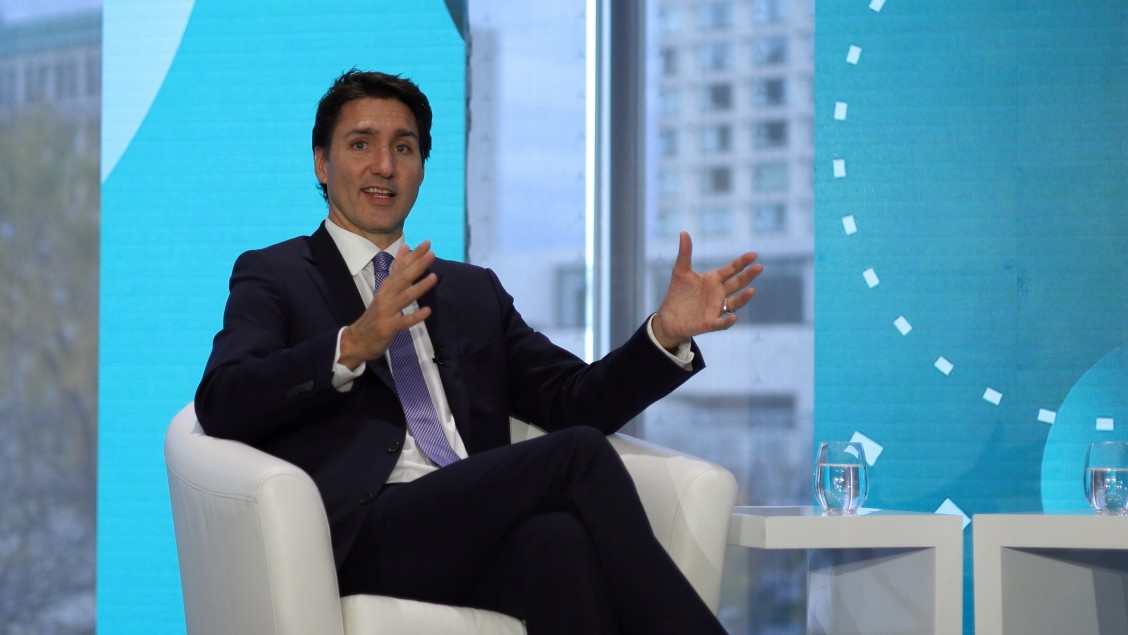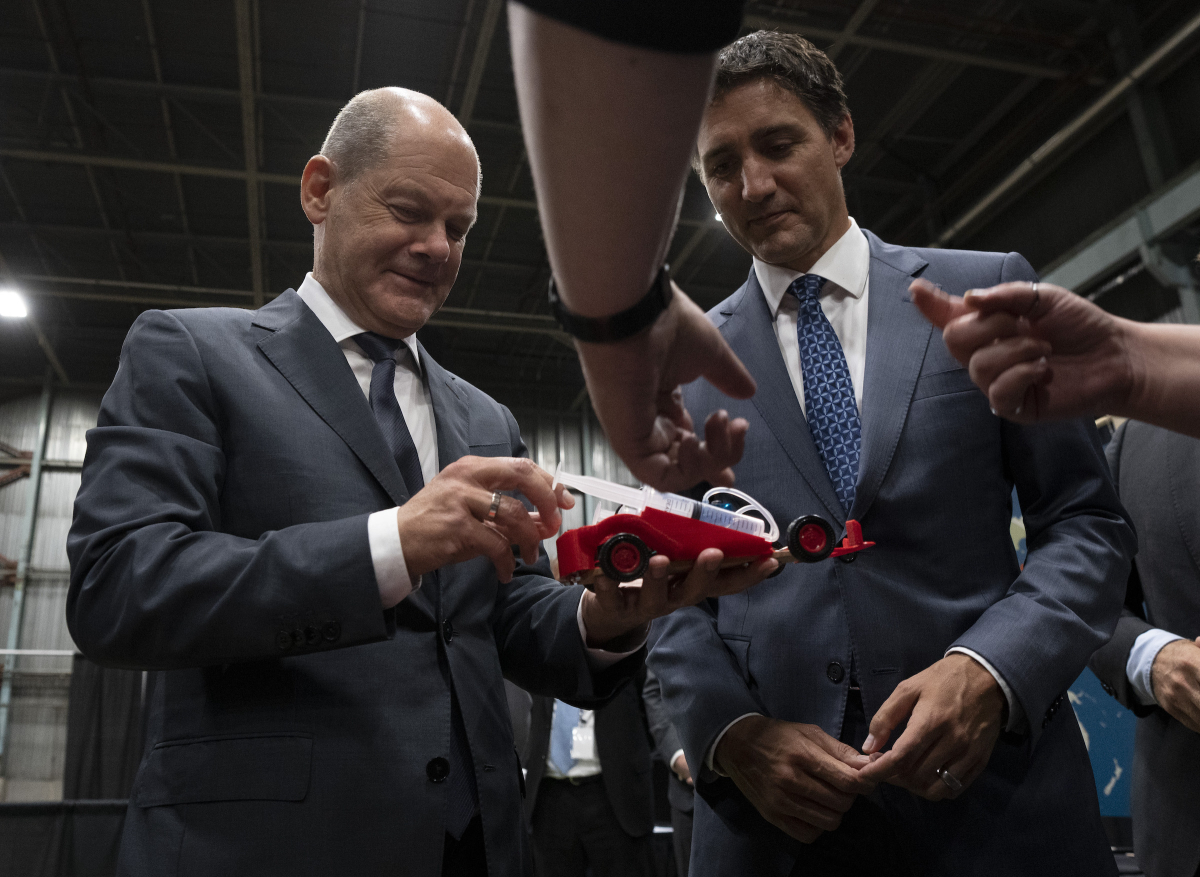On our radar
Here’s a look ahead at what we’ll be covering in 2023.
On Parliament Hill

There's lots to keep an eye on in the new year at the federal level:
The long-anticipated oil and gas emissions cap is supposed to be revealed by the end of 2023 and will be top of mind for both environmentalists and fossil fuel companies.
Just transition legislation will also be introduced this year, and I'm curious to see what the federal government comes up with.
A “just transition” typically refers to helping workers transition out of fossil fuel industries, like oil and gas, but late last year, Natural Resources Minister Jonathan Wilkinson said the global shift to a low-carbon future can be accomplished “without phasing out Canada's oil and gas sector,” which raises questions about the federal government's vision of a just transition for workers. The legislation will be very telling.
The federal government recently released a fairly strong policy on ending public financing for unabated fossil fuels (oil, coal and gas without carbon capture) abroad, which is a big step, but there is much more to come. The feds committed “to phase out and rationalize inefficient fossil fuel subsidies” by 2023, and we'll be keeping a close eye on that. — Natasha Bulowski, Ottawa reporter
Expect more mudslinging in the House of Commons... Politicians on the Hill have had some spirited exchanges over the past few months, particularly with Pierre Poilievre now at the helm of the official Opposition (though, to be fair, fellow MPs were taking shots at the Conservative politician before he even won the party’s leadership race). Disinformation has also become a topic of concern in Ottawa as the feds combat the spread of conspiracy theories and misleading posts on social media, sometimes by their own colleagues.
...a blueprint for cleaning up the grid... Ottawa’s plans to get greenhouse gas pollution out of the power sector are expected to emerge in 2023 and will offer more details on how the government will meet its promise of a net-zero power grid by 2035.
…and more on the next generation of nuclear technology. What are SMRs? Reporter Cloe Logan tells you everything you need to know.
On Bay Street

Climate finance is going to be a hot issue this year, and I’m planning to focus on bringing to light stories that help show who is paying for the energy transition and who is paying to delay it.
In Canada, the federal government is developing new financial regulations to regulate the Wild West of so-called sustainable investing, which, practically, means figuring out how to incentivize billions of dollars of greener investment.
Internationally, Canada is also playing an important role in finance, from negotiating loss and damage issues, to delivering on a promise to provide $100 billion to developing countries to bring emissions down and adapt to warming (temperatures) already locked in. In 2023, you can expect to see the spotlight on the money pipeline get even brighter. — John Woodside, climate finance reporter
Canada’s financial institutions are getting their own green glossary... The government-appointed Sustainable Finance Action Council is working on a set of rules and definitions that will clear up what a sustainable investment is — and isn’t. So far, the draft taxonomy has received mixed reviews, with some environmental and climate finance experts pointing out the current council is essentially letting banks, pensions and insurance companies write the rules for themselves. Time will tell whether the final rules will line up with Canada’s U.S. and EU counterparts.
…and banks will likely face another shareholder showdown. As financial institutions around the world continue to pour hundreds of billions into fossil fuel investments, shareholders and activists are pushing banks to get serious about their net-zero promises. Last year, Canada’s biggest banks faced several shareholder proposals urging them to clean up their act — and shareholders voted every single one of them down. This year’s annual general meetings are likely to see similar resolutions as the divestment movement continues to turn up the heat.
On the water

In the coming year, I think we’ll finally see a recognition and a surge of interest in oceans as the greatest carbon sink on the planet. Particularly after Ottawa doubled down on its pledge to protect 30 per cent of Canada’s waters and lands by 2030 at the recent COP15 summit in Montreal.
Boasting the longest coastline in the world, Canada can’t meet its climate and biodiversity goals without its oceans and a deep dive into the threats they face and the solutions they can provide. — Rochelle Baker, coastal communities reporter
The feds will look to oceans to protect nature and fight climate change... “Blue carbon” solutions like restoring kelp forests and seagrass meadows — projects that help absorb and store carbon, keeping it out of the atmosphere — may have a part to play in Canada’s race to stop global warming.
Meanwhile, the recent creation of a vast, Indigenous-led network of marine protected areas along the West Coast represents a promising step toward protecting nature, though there are still details to work out in the proposed plan.
…while coastal communities grapple with the crisis already on their doorstep. Rising sea levels and extreme weather — like hurricane Fiona, which hit the East Coast last year — mean oceanside communities have a front-row seat to the impacts of a hotter planet. With some changes already underway, residents in those communities will continue to face tough decisions in adapting to the climate crisis.
Where Indigenous issues and climate change meet

In 2023, we'll remain focused on covering how Indigenous issues and climate intersect. Indigenous-led conservation has been a win for many in the climate space, but questions remain over IPCAs (Indigenous Protected and Conserved Areas) and the provinces, not to mention whether free, prior and informed consent (from First Nations) will be respected in major development projects across the country. — Matteo Cimellaro, urban Indigenous communities reporter
Indigenous Peoples get more of a voice in plans to protect the planet… Even though Indigenous Peoples still don’t have a seat at the table when it comes to negotiating international deals, governments around the world are beginning to recognize the knowledge and expertise they bring to tackling both the climate and biodiversity crises — a welcome and long overdue development. In Canada, Inuit, Métis and First Nations are taking the lead on IPCAs, stewardship programs and other conservation projects that will have an impact within their traditional territories and beyond.
…but still risk being undermined by colonial governments. The largely unregulated trading of carbon offsets and credits, for example, poses a number of concerns — and a few possible solutions — for anyone interested in reaching net-zero greenhouse gas emissions. But beyond the challenge of accounting for carbon pollution, the world’s fledgling carbon market could become a tool for either reconciliation or colonization, depending on how it is set up.
In the East

I’m definitely going to continue keeping tabs on the offshore oil industry in Newfoundland and Labrador, where there is a big push for offshore oil (at a time) when critics say we need the opposite: renewables. In the same vein, Canada’s first deepwater offshore oil project, Bay du Nord, has yet to receive financing, so it will be important to keep tabs on that. — Cloe Logan, Atlantic reporter
Atlantic Canada’s looming offshore oil boom. If last year signalled Newfoundland and Labrador’s intention to become a major player in the future of Canada’s oil and gas industry, this year will tell us more about which companies will take the bait. So far, the province has greenlighted more than $200 million worth of exploration licences for companies to ply the Atlantic in search of oil and gas. That’s on top of the now-approved Bay du Nord project. If the province has its way, there will be twice as much oil and gas coming from its offshore industry by 2030.
Newfoundland isn’t the only province going all in on oil and gas. Nova Scotia also plans to cash in on the offshore boom with more oil and gas development. And as the oilsands struggle to compete with so-called “clean” oil (it’s not), the East Coast is hoping to seize on a fast-closing window of opportunity — even if it poses some serious economic questions.
A clean power grid is coming to the East Coast… The federal government plans to finalize a $5-billion project this year that would deliver hydroelectric power from Labrador and Quebec to Nova Scotia and New Brunswick. The Atlantic Loop, as it’s known, is seen as key to helping the latter two provinces quit coal.
…and so is green hydrogen. When the leaders of Canada and Germany announced a hydrogen alliance earlier this year, they did so in Stephenville, N.L. — a town set to one day host the province’s first wind-powered, zero-emission hydrogen plant. Nova Scotia, too, is getting in on the green hydrogen game, with several projects under review by the provincial government, including one that’s slated to start shipping ammonia — a way to transport hydrogen in liquid form — as early as 2025.
More CNO reads

B.C. needs fire. Meet the man bringing it back. Skeetchestn fire keeper Joe Gilchrist is on a mission to use the regenerative burning practices his grandfather taught him to protect B.C.'s forests, Marc Fawcett-Atkinson reports.
Canada’s biggest oilsands producers want to build a carbon storage hub. The plan involves transporting liquefied carbon dioxide — captured from up to 20 oilsands facilities — through 400 kilometres of pipeline to a site in northeastern Alberta where it would be stored deep underground, Natasha Bulwoski reports.
Activists say a Canadian company is “misleading” its investors. Belo Sun wants to build Brazil's largest open-pit gold mine in the heart of the Amazon, John Woodside reports. Indigenous rights and environmental advocates are targeting the company's shareholders in a bid to stop the project.
We should all pay more for alcohol. So says columnist Max Fawcett: “The single best way to reduce (alcohol's) risk of injury or ‘other problems’ — which can include everything from health impacts to violence and other social disorders — is by raising the price.”
Who gets to fish for B.C. salmon in the future? The West Coast’s commercial salmon fleet is clearly in the midst of transformative change, Rochelle Baker reports. What's less clear is who will remain on the water with access to salmon as the federal government reshapes the industry that was once the backbone of the coast.
Attention, average workers: Canada’s top CEOs make 243 times more than you. The highest-paid executives in the country earned as much as the average worker on the first working day of the year — before some of us even had breakfast, Natasha Bulowski reports.
What’s happening to the apple trees? Across North America, farmers have struggled to make sense of a mysterious phenomenon that can wipe out whole orchards in a matter of weeks. Marc Fawcett-Atkinson digs into the conundrum.
The denial of safe drinking water for Indigenous Peoples is a social disparity that must end. Canadians have long promoted social justice by expanding people's access to safe drinking water around the world, writes Mahmuda Khan, executive director of Human Concern International. So why are so many Indigenous communities in our own backyard without clean water?


